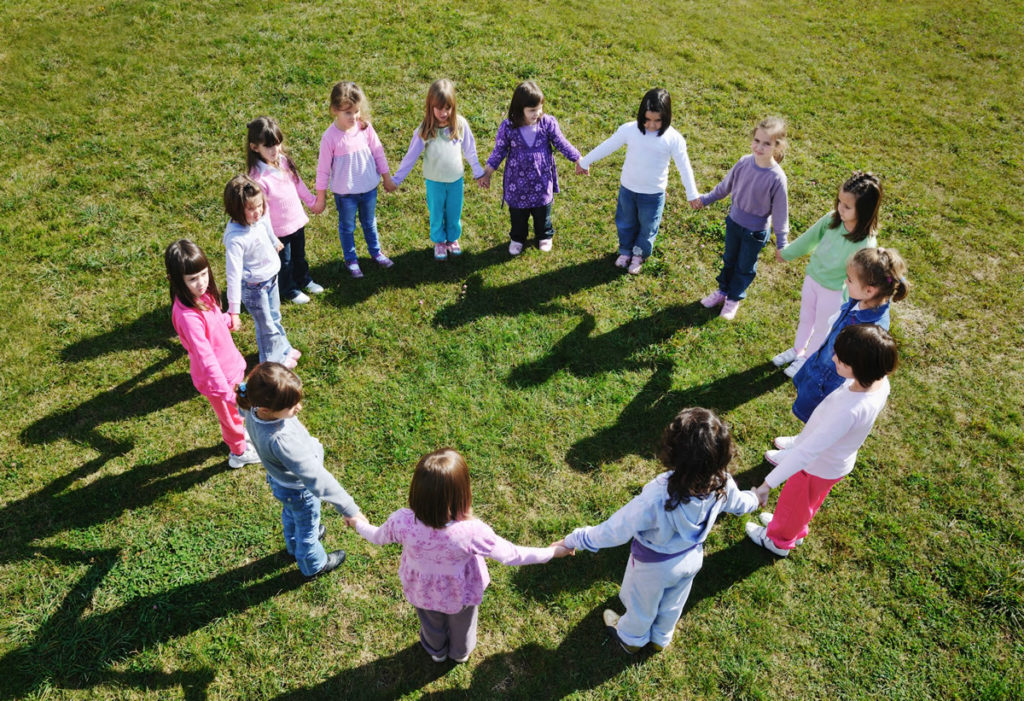Sharing is a vital part of learning, and as such should be a part of every school day. Carrying out activities in which sharing comes into play can be an excellent and beneficial daily routine , a key practice in finding a responsive classroom in which all members meet for about twenty to thirty minutes to greet each other, share news and ideas, do something fun together, read … etc. These types of exercises help students to start each day in a caring and respectful way, getting to know each other and practicing academic and social skills.

Sharing plays an important role in building a positive community in the classroom, as well as ample opportunities to practice and reinforce speaking, listening, and thinking skills, which are absolutely crucial for school success. As social beings, people learn by communicating with others , and this is applicable to almost any topic we deal with. Knowing how to observe and reflect, speak and listen, are fundamental skills for our ability to learn. And these skills allow us to exchange perspectives and ideas, explain our thinking or criticize that of others – tasks that children need in all areas of school and life.
Recognizing the value of these communication skills makes the idea that a series of routines need to be established so that children can effectively prepare for and participate in a variety of conversations and activities among peers makes much more sense. The sooner you begin to participate in a variety of rich and structured conversations, the easier it is for you to cope with higher academic degrees and professional life. In addition, acquiring good relationship skills opens the way to that place where things are understood clearly and discussed with respect and empathy.
Way to learn to share in class
Learning to share and acquiring relationship and communication skills is something that can be practiced very easily in the classroom every day. Through a series of simple activities, in the classroom students can find a daily space for this crucial communication practice, practice and integrate it into the academic, social and emotional content of their lives. The chosen topics can be important news of the week, events, or questions related to daily life and the children’s own routines, such as “how did school go the day before” or “what kind of movies do you like? ”.
In addition, the idea of sharing is easily applicable to almost any academic or social topic , as well as easy to structure, and here are three basic ways to do it:
- Share around a circle . This format provides a safe way to introduce basic sharing skills, such as deciding on an idea, speaking clearly, listening carefully, or remembering what was shared. The teacher should announce a topic to the circle before starting, and all members of the circle should say something brief about the chosen topic . Students should take at least a minute to think and then begin the discussion. The circle will show the ability of each student to agree with others, to debate and refute or to let go, at the same time that they learn about important topics and start the day relaxed and informed.
- Share between couples. In this other format, students get together two by two to talk to each other about a topic chosen by the teacher. This is a good way to introduce the activity in a more intimate way, suitable especially if there are shy students who may have more trouble speaking in front of an entire group or who tend to fidget while others are talking. It can also be interesting that students are paired with classmates with whom they generally do not work or play, since it is common for children to choose the same classmates over and over again for all kinds of activities, which usually brings very little benefit in gaining good communication and relationship skills. The activity can be extended if the objective is for them to write down those things they find in common or for the conclusions to be shared later with the rest of the class.
- Share ideas. This format implies manifesting the topic to work the day before to begin the next day with the presentation of the ideas and conclusions of each student. A format that allows you to work at home in an intimate and personal way, to encourage discussion later on more worked and reflective ideas . It can also be organized through more elaborate works and dedicate the week to exposing them, which can be ideal if you work on project-based learning.
Formats can be chosen based on issues such as class competencies, student needs, time constraints, or classroom events and calendars. Many teachers prefer the circle, considering that it provides a much deeper practice of the skills of speaking , listening and thinking, but all the methods are equally valid and have their own advantages. The important thing is the end, which is none other than to build a respectful and affectionate community while the ideas , conclusions and concerns of each are addressed and discussed . In this way, children also reinforce their competence in good communication skills, essential for their entire learning journey.











































































































